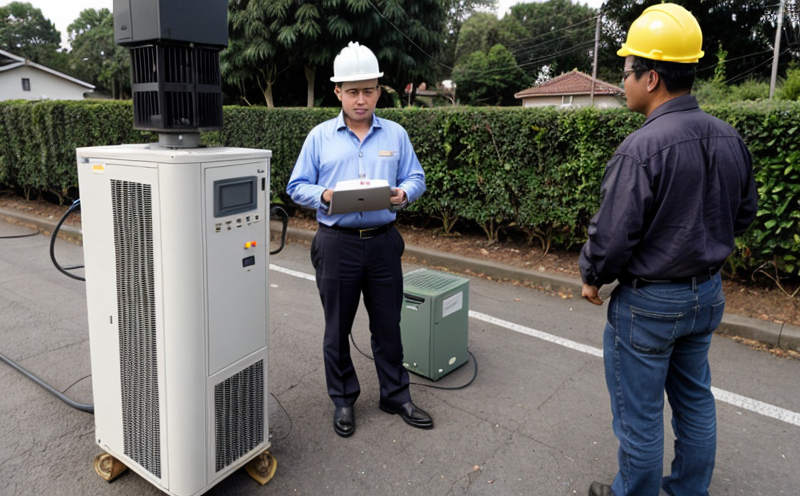Smart grid equipment inspection
The smart grid represents a crucial evolution in power delivery and consumption. It integrates advanced digital technology to improve the efficiency, reliability, and sustainability of electricity networks. Smart grid equipment inspection is essential for maintaining and optimizing these critical systems. This process involves thorough testing and evaluation of components such as transformers, circuit breakers, relays, and communication devices to ensure they meet or exceed regulatory standards.
Inspection methodologies are tailored to the specific characteristics of smart grid infrastructure. For instance, the insulation integrity of transformers must be evaluated using dielectric tests, while the accuracy of smart meters requires precise calibration against international standards like IEC 62056. The primary goal is to detect and rectify potential issues before they escalate into failures that could disrupt service.
The sector context highlights the significance of this inspection in ensuring grid stability and security. Smart grids are interconnected networks, making them vulnerable to cascading failures if any single component malfunctions. By conducting rigorous inspections, we can prevent these disruptions and enhance overall network resilience.
Inspection processes often involve a combination of non-destructive testing (NDT) techniques such as ultrasonic testing, radiography, and magnetic particle inspection for detecting internal flaws without compromising the equipment's integrity. For instance, thermographic imaging helps identify hotspots in electrical systems, which could indicate impending failures.
Acceptance criteria for smart grid equipment are stringent to ensure reliability and safety. Equipment must pass tests according to relevant standards such as IEEE C57 and IEC 60297. This includes verifying the correct operation of control and protection devices under specified conditions. The success of these inspections directly impacts the performance and longevity of the entire smart grid system.
Real-world testing scenarios often involve simulating various operational conditions to assess equipment response accurately. For example, a circuit breaker may be tested for its interrupting capacity in an environment mimicking actual service conditions. This ensures that the equipment can handle peak loads and fault currents safely.
The importance of smart grid equipment inspection cannot be overstated given the increasing complexity and scale of modern power networks. Continuous monitoring and maintenance are essential to uphold the integrity of these systems, ensuring they continue to provide reliable and efficient electricity supply.
Industry Applications
| Application Area | Description |
|---|---|
| Utility Company Infrastructure | Inspecting transformers, circuit breakers, and meters to ensure they meet regulatory standards. |
| R&D Laboratories | Evaluating prototype smart grid components for performance under various conditions. |
| Smart Grid Maintenance Teams | Performing routine inspections on deployed equipment to identify potential issues early. |
| Regulatory Bodies | Serving as a benchmark for compliance and ensuring adherence to international standards like IEC 60297. |
- Utility companies use inspections to ensure their assets are reliable and efficient.
- R&D labs test new technologies before they are deployed in real-world environments.
- Maintenance teams perform regular checks to prevent failures that could affect service quality.
- Regulatory bodies rely on inspection results to enforce compliance with international standards.
Quality and Reliability Assurance
- Conducting thorough inspections of smart grid equipment according to international standards like IEC 60297.
- Performing non-destructive testing (NDT) methods such as ultrasonic testing, radiography, and magnetic particle inspection to detect internal flaws without compromising the integrity of the equipment.
- Evaluating control and protection devices under specified conditions to ensure they operate correctly during peak loads and fault currents.
- Thermographic imaging identifies hotspots in electrical systems early on.
- Calibration tests verify the accuracy of smart meters against international standards like IEC 62056.
The quality and reliability assurance process is critical for maintaining the integrity and performance of smart grid equipment. By adhering to these stringent testing protocols, we can ensure that each component functions optimally within its intended environment.
Customer Impact and Satisfaction
Smart grid inspections significantly impact customer satisfaction by ensuring a reliable and efficient electricity supply. Reliable systems reduce the frequency of outages and disruptions, enhancing overall service quality. This not only improves customer satisfaction but also contributes to environmental sustainability by optimizing energy use.
The continuous monitoring and maintenance enabled by smart grid equipment inspections help prevent failures that could affect service continuity. For customers, this translates into more consistent and dependable power supply, which is crucial for businesses and households alike.
Moreover, the insights gained from these inspections allow utility companies to plan maintenance activities proactively, minimizing downtime and operational costs. This proactive approach ensures that smart grid equipment remains in optimal condition, thereby enhancing both customer satisfaction and environmental performance.





